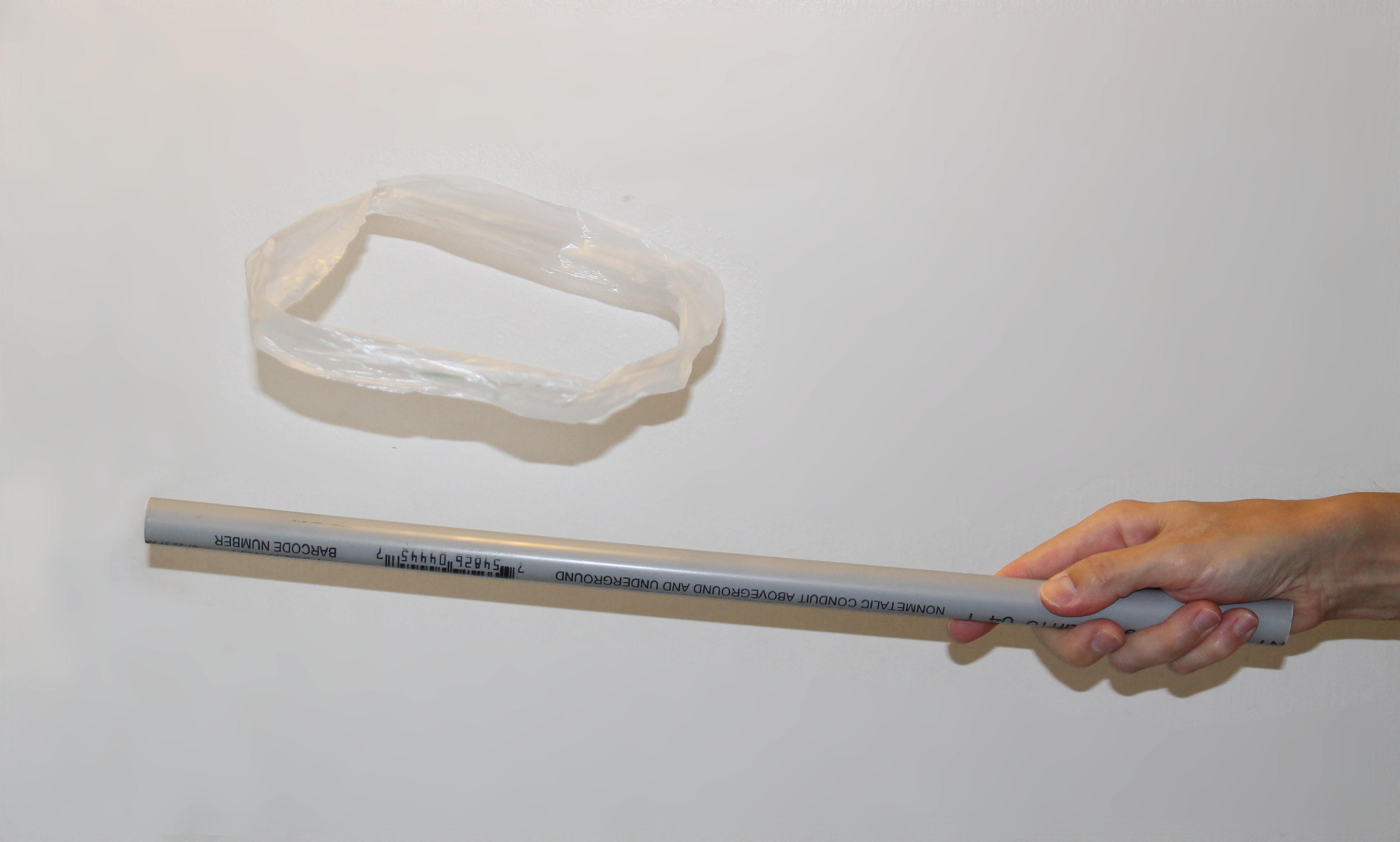
Some people seem to think that to "do science," you need special, expensive equipment. But science is all about how the world works. So, by paying attention to the things around you, you can learn some pretty cool things.
Just a few common materials you can use at home can make a fun toy that seems like magic, letting you learn a lot about static electricity. A grocery store produce bag, a plastic stick, and a piece of fabric let you make a "magic ring" that wants to stick to most things - but that you can keep floating in midair using the "magic wand."
• A grocery store produce bag
[*] It's a little easier if the bag hasn't been used before, but only a little.
You could use a plastic bag like you get at checkout instead of a produce bag, but it's not as good: the plastic is thicker so it's heavier for a given surface area; and it's a larger diameter so the forces are more spread out.
One bag can make several rings - enough for several people to play with.
and scissors, to make the "ring"
• A PVC pipe
[*] PVC works really well. It's easy to find at hardware stores (for plumbing or as electrical conduit), and you can often get short lengths for free from construction scrap.
If you don't have easy access to PVC, many other types of plastic also work. You could even wrap most kinds of solid sticks or bottles with plastic wrap or a plastic grocery bag - or more of the produce bag. Many kinds of plastic rods/bars work well, but clear plastic bottles (like two-liter bottles) will actually attract the ring instead of repelling it.
, about 1.5 feet long, to make the "wand".
• A piece of wool
[*] I love doing this in winter, using a wool sweater that I'm wearing. Wool scarves or socks also work great.
In low to moderate humidity, cotton also works very well; as long as you avoid synthetics, most fabrics should be fine.
large enough to cover your hand.

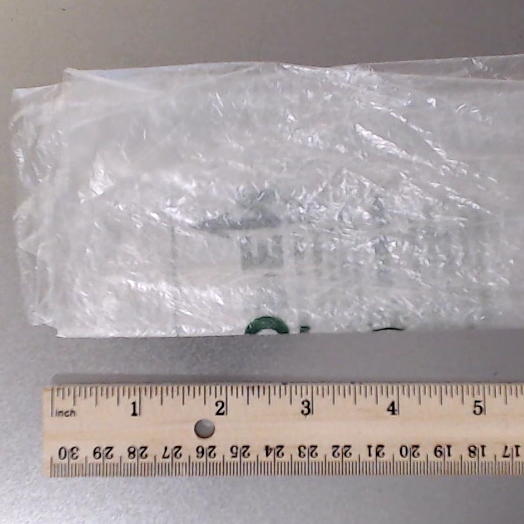
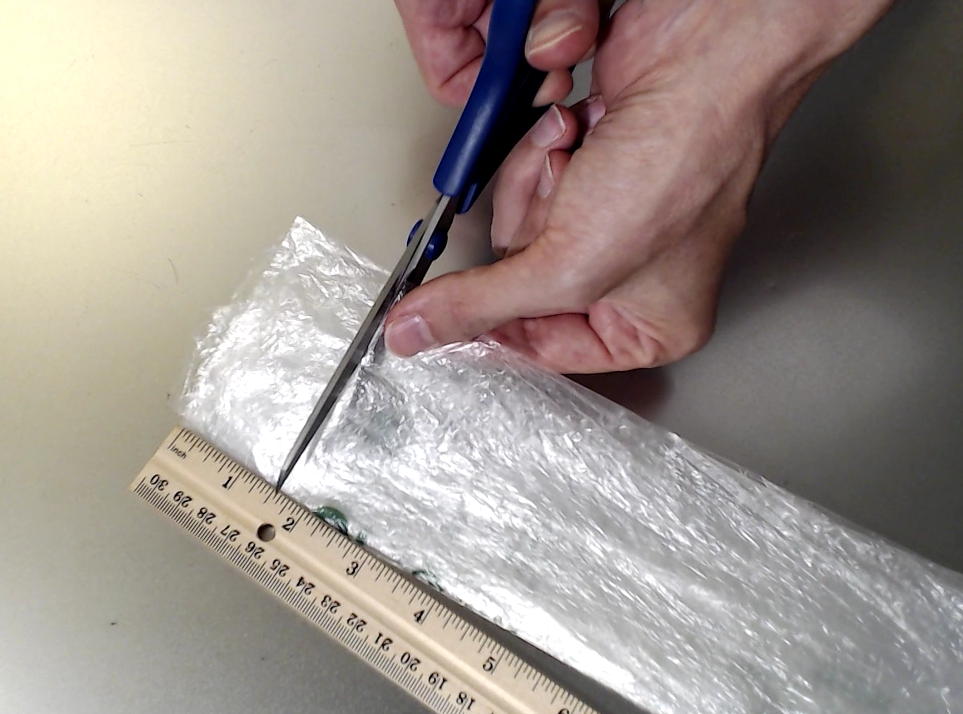
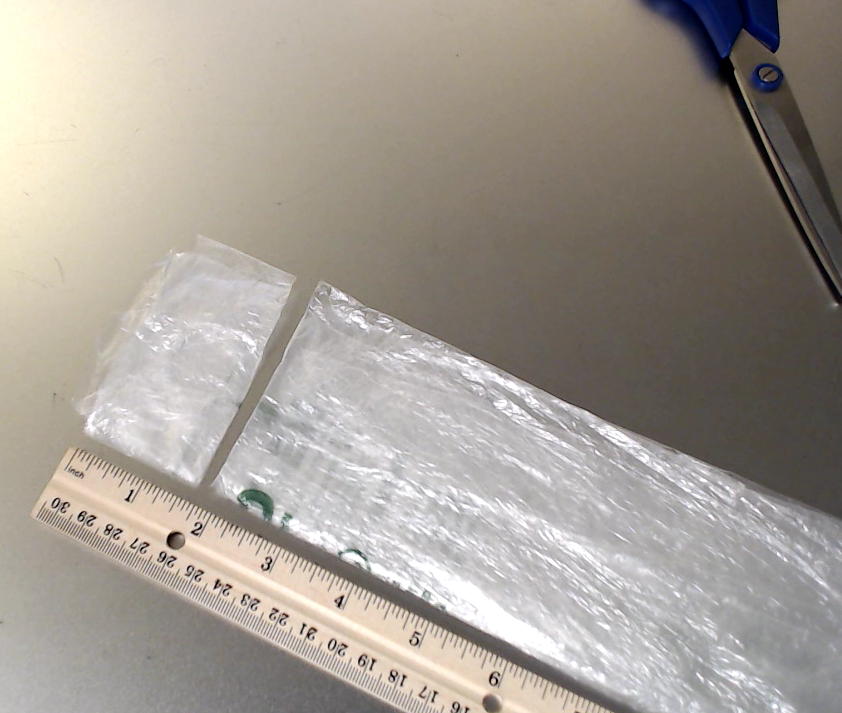
• Rub the wand and wool against each other, to charge it up.
• Rub the ring and wool together, to give it the same charge. As much of the ring should rub against wool as possible, while touching your hands as little as possible. A good routine: fold the wool a little, put a part of the ring in the slot you just made, pinch, and pull on the ring until you've gone all the way around at least once.
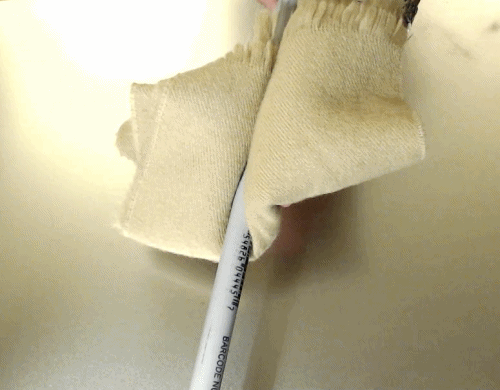
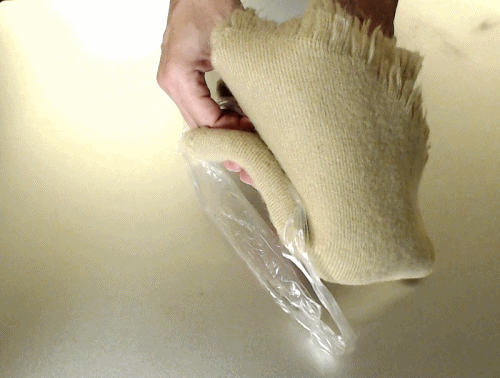
• Toss the ring in the air; as soon as you do, the ring will puff out into a circle. Then, hold the wand underneath the ring. It will repel the ring upward, making it float.
• Play around with it. By holding the wand on different sides of the ring, you can get the ring to dance and move. If the ring gets too close to a wall, a ceiling, a person, etc., it will be attracted and stick.
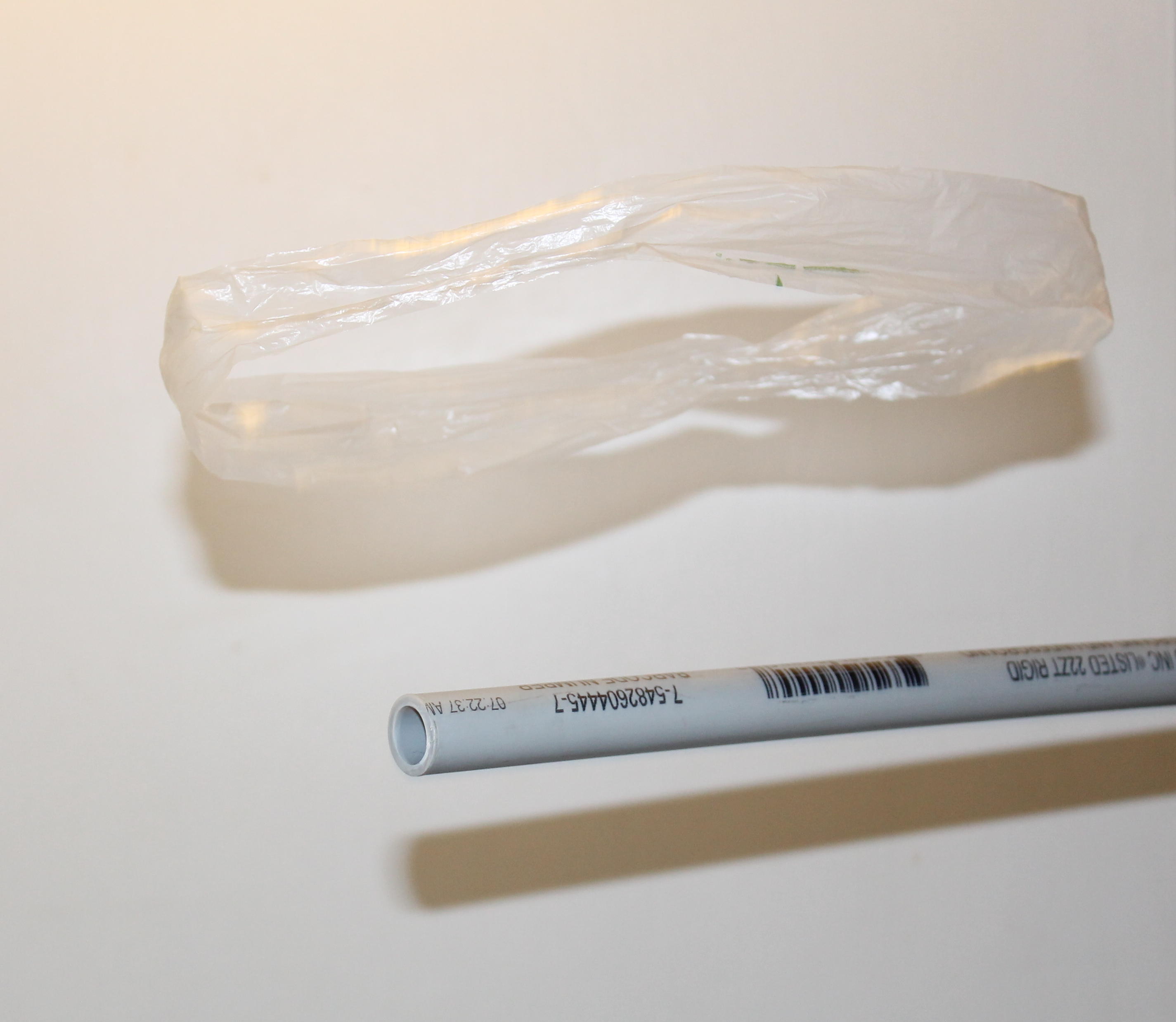
Science students can get excited about learning more about how everything is made of protons, neutrons, and electrons. Younger kids enjoy the "magic" of forces that don't require contact - especially attracting to the ceiling and themselves.
Have you even noticed how hard it can be to open a produce bag? There are several effects involved, but part of the issue is static cling. But if you rub your hands quickly against the bag, you can use static electricity to your advantage: the parts of the bag that you rub get the same sign charge, and end up repelling each other.
All materials left to themselves (and exposed to the environment) tend to become electrically neutral - having equal numbers of protons and electrons. Because of their chemistry, some like to grab on to extra electrons, and get a net negative charge (more negative electrons than positive protons). Others are happy to give up electrons, and get a net positive charge (more positives than negatives). Others are equally happy to take electrons other molecules want to give up, or to give away electrons that other molecules want to grab.
So, in response to two different materials coming in contact and being separated quickly, each will get equal and opposite net charge. That's why you can get a shock when scuffing shoes on a carpet, or your when your clothes leave your car seat, or when different fabrics tumble against each other in the dryer.
People have tried this with many materials, leading to the "triboelectric series." An excellent presentation of it is at AlphaLab, Inc. Charging by contact and separation is called "triboelectrification."
Wool loves giving up electrons. PVC and plastic bags love taking them. So, after rubbing both with wool, the PVC and plastic both get a negative charge, and repel each other. (Opposites attract, likes repel.) And the charged ring attracts to the wall, ceiling or even you - just like when you rub a balloon against your hair, the charged balloon can stick to walls.
So, take the opportunity to learn about atoms and their protons, neutrons, and electrons. And see how they can move from one material to another, or rearrange themselves within each material. And if you want to go even further, you can learn about Coulomb's Law.

The most likely reason: it's too humid. Water molecules love sticking to things. If there's enough water vapor in the air, a thin coating of liquid water forms on almost all surfaces. Water with even a little other stuff mixed in is a good electrical conductor - so any charge you get from the two materials spreads through you, the table, etc. to the ground before you get a chance to do anything interesting with it.
You can help this by baking out the moisture using a hair dryer, or putting things in a still-warm clothes dryer - but that might buy only a few minutes of less-dramatic effects. But make sure you know what you're doing: you're not trying to blow it off, like dust. Instead, you're trying to bake it out, and leave it warm enough that new vapor won't condense on it right away.
In desert climates, you can do this year-round; but in most places, it's best left as a seasonal activity. It's pretty good any time from when the weather first turns cool in fall until things start to get hot in the summer, with mid-winter (when you're likely to be wearing sweaters anyway) being best.
If you're sure humidity is not an issue, make sure you haven't used an anti-static dryer sheet, or materials that just don't work well together. (Look at that triboelectric series again.) Try some other materials, and you should find some that work.